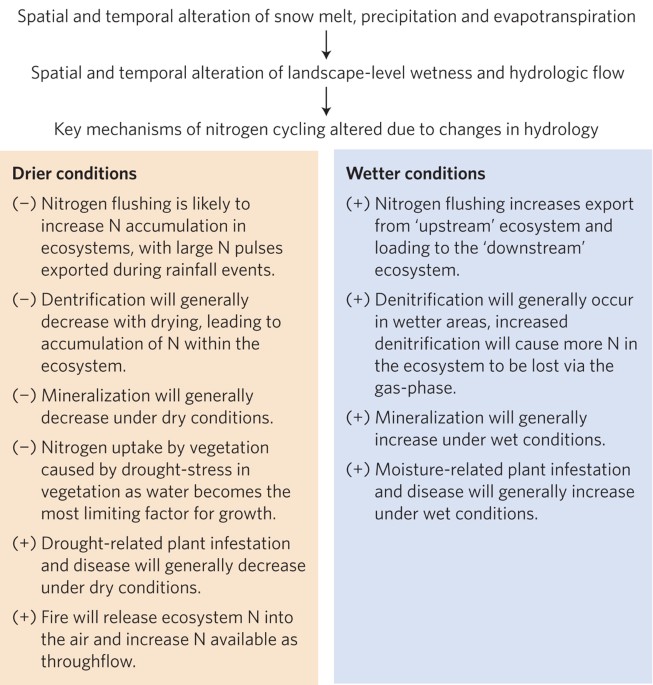
- Select a language for the TTS:
- UK English Female
- UK English Male
- US English Female
- US English Male
- Australian Female
- Australian Male
- Language selected: (auto detect) - EN
Play all audios:
Climate change and anthropogenic nitrogen deposition are both important ecological threats. Evaluating their cumulative effects provides a more holistic view of ecosystem vulnerability to
human activities, which would better inform policy decisions aimed to protect the sustainability of ecosystems. Our knowledge of the cumulative effects of these stressors is growing, but we
lack an integrated understanding. In this Review, we describe how climate change alters key processes in terrestrial and freshwater ecosystems related to nitrogen cycling and availability,
and the response of ecosystems to nitrogen addition in terms of carbon cycling, acidification and biodiversity.
The authors thank the participants of the Environmental Protection Agency sponsored workshop: 'Interacting Effects of Climate and Nitrogen on Ecosystems and Their Services: Workshop to
Review Current Science and Inform Policy-Driven Scientific Needs' for their contributions. We also thank Meredith Lassiter and Ellen Cooter for technical comments to improve the manuscript.
The views expressed in this abstract are those of the authors and do not necessarily represent the views or policies of the US EPA.
National Center for Environmental Assessment, US Environmental Protection Agency, Research Triangle Park, 27711, North Carolina, USA
T. L. Greaver, A. F. Talhelm, C. P. Weaver, E. Felker-Quinn, J. D. Herrick & K. J. Novak
National Center for Environmental Assessment, US Environmental Protection Agency, Arlington, 22202, Virginia, USA
Western Ecology Division, US Environmental Protection Agency, Corvallis, 97333, Oregon, USA
Air Quality Analysis Office (AQAO), US Environmental Protection Agency, Region 9 Air Division, 75 Hawthorne Street, San Francisco, 94105, California, USA
College of Natural Resources, University of Idaho, Moscow, 83844, Idaho, USA
Department of Geography, Institute for the Environment, University of North Carolina at Chapel Hill, Chapel Hill, 27514, North Carolina, USA
US Geological Survey, Natural Resource Ecology Laboratory, Colorado State University, Fort Collins, 80523-1499, Colorado, USA
Appalachian Laboratory, University of Maryland Center for Environmental Science, 301 Braddock Road, Frostburg, 21532, Maryland, USA
Bren School of Environmental Science and Management, University of California, Bren Hall, Isla Vista, 93271, California, USA
Clean Air Markets Division, US Environmental Protection Agency, 20460, Washington, DC, USA
State Key Laboratory of Vegetation and Environmental Change, Institute of Botany, Chinese Academy of Sciences, Xiangshan, Beijing, 100093, China
Cornell University, Ecology and Evolutionary Biology, Corson Hall Ithaca, 14853, New York, USA
C.M.C., J.E.C., R.A.H. and T.L.G conceived the paper. T.L.G., C.M.C., J.E.C., D.V., A.F.T. and C.P.W. led the writing, with contributions from L.L., E.F., E.A.D, C.L.G., J.A.L., L.E.B.,
C.L.T., J.S.B., J.D.H. and K.J.N.
Anyone you share the following link with will be able to read this content:




